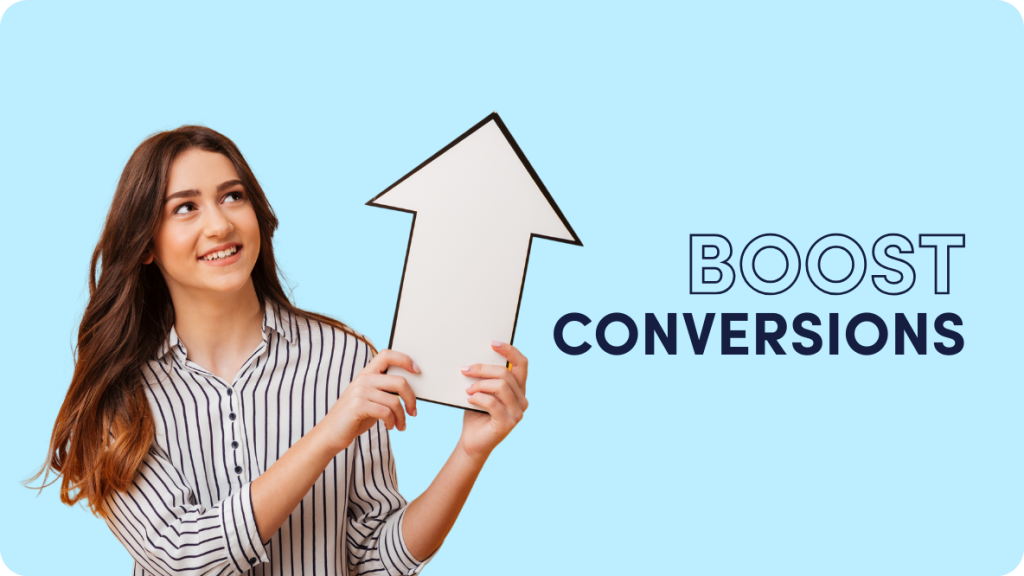Office Address
DSB 267 FF, OPPOSITE AGGARSAIN BHAWAN HISAR 125001
Phone Number
+91 90344-38894
+91 81681 - 38304
DSB 267 FF, OPPOSITE AGGARSAIN BHAWAN HISAR 125001
+91 90344-38894
+91 81681 - 38304

Increasing the online sales conversion rate is crucial for maximizing revenue and achieving business growth. A higher conversion rate means more of your website visitors are taking the desired actions, whether that's making a purchase, signing up for a newsletter, or requesting more information. This blog explores proven strategies to enhance your online sales conversion rates, providing actionable tips to help you optimize your e-commerce efforts.

A seamless user experience (UX) is fundamental to improving conversion rates. Your website should be easy to navigate, visually appealing, and fast-loading. Designbit Software Pvt Ltd is the best UI UX Service provider in Hisar. Here are the key elements to focus on:
Responsive Design: Ensure your website is mobile-friendlyand provides a consistent experience across all devices.
Intuitive Navigation: Simplify navigation menus and use clear call-to-action (CTA)buttons to guide users toward conversion points.
Fast Load Times: Optimize images, leverage browser caching, and use content delivery networks (CDNs)to reduce page load times.
Product pages are critical for driving conversions. Make sure your product pages are well-optimized to persuade visitors to make a purchase:
High-Quality Images: Use clear, high-resolution images and offer multiple views of the product.
Compelling Descriptions: Write detailed, persuasive product descriptions that highlight key features, benefits, and unique selling points.
Customer Reviews and Ratings: Display customer reviews and ratings to build trust and provide social proof.
A complicated or lengthy checkout process can lead to cart abandonment. Streamline your checkout process to make it as easy as possible for customers to complete their purchase:
Guest Checkout: Allow customers to check out without creating an account to reduce friction.
Auto-Fill Options: Implement auto-fill options for address and payment information to speed up the process.
Progress Indicators: Use progress indicators to show users how many steps are left in the checkout process.
Effective CTAs encourage users to take the next step in the buying process. Ensure your CTAs are clear, compelling, and strategically placed:
Action-Oriented Language: Use strong, action-oriented language that creates a sense of urgency (e.g., "Buy Now," "Limited Time Offer").
Visible Placement: Position CTAs prominently on product pages, landing pages, and throughout the checkout process.
Design: Make CTAs stand out with contrasting colors and bold fonts.
Personalization can significantly boost conversion rates by making the shopping experience more relevant to individual users:
Product Recommendations: Use algorithms to suggest products based on browsing history, past purchases, or user preferences.
Dynamic Content: Display personalized content, such as special offers or discounts, based on user behavior and demographics.
Email Marketing: Send personalized follow-up emails, cart abandonment reminders, and tailored offers to engage customers and encourage conversions.
Exit-intent popups can help capture potential customers who are about to leave your site without converting. Use these popups to offer:
Discounts or Incentives: Provide a discount code or special offer to encourage users to complete their purchase.
Lead Capture Forms: Offer a free resource or subscribe to a newsletter in exchange for contact information.
Building trust is essential for increasing conversion rates. Use social proof and trust signals to reassure customers and encourage them to take action:
Customer Reviews: Display positive reviews and testimonials prominently on your site.
Trust Badges: Include security badges, payment method logos, and guarantees to reassure customers about the safety of their transactions.
Case Studies and Success Stories: Share case studies and success stories that highlight satisfied customers and successful outcomes.
Continuous optimization is key to improving conversion rates. Use A/B testing to compare different versions of your website elements and determine what works best:
Test Variations: Experiment with different headlines, CTAs, product images, and page layouts.
Analyze Results: Use analytics tools to evaluate the performance of different variations and make data-driven decisions.
Regularly analyze your website’s performance to identify areas for improvement:
Conversion Rate Analytics: Track metrics such as conversion rates, bounce rates, and exit rates to gauge performance.
Customer Feedback: Gather feedback through surveys, reviews, and user testing to understand customer pain points and preferences.
Competitor Analysis: Review competitor websites to identify best practices and trends that you can incorporate into your own strategy.
Boosting online sales conversion rates requires a combination of optimizing user experience, improving product pages, simplifying the checkout process, and leveraging personalization and social proof. By implementing these strategies and continuously analyzing and adapting based on data, you can enhance your e-commerce development company and drive higher conversions. Stay proactive in testing and refining your approach to achieve sustained success and growth.